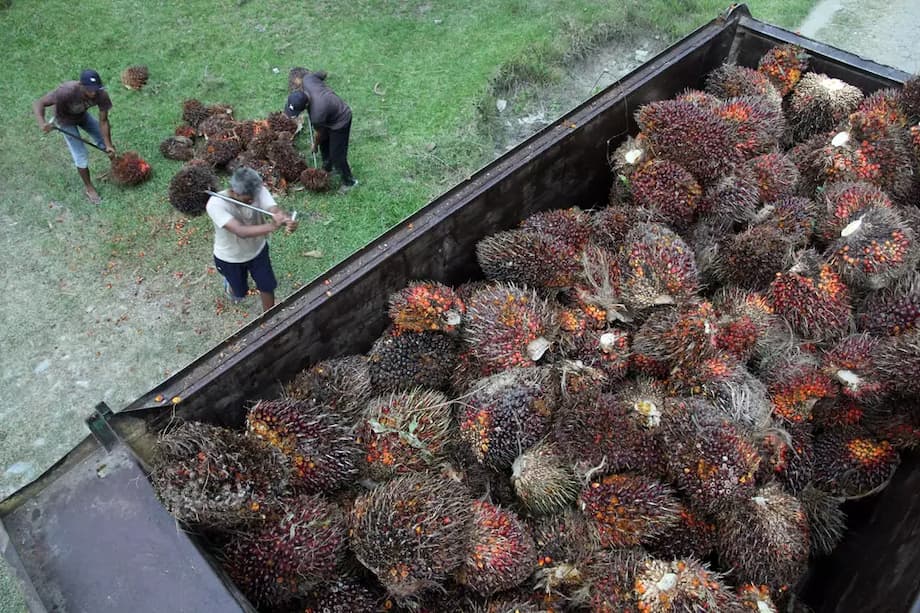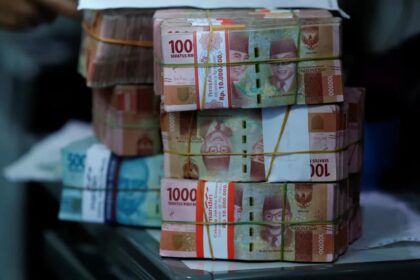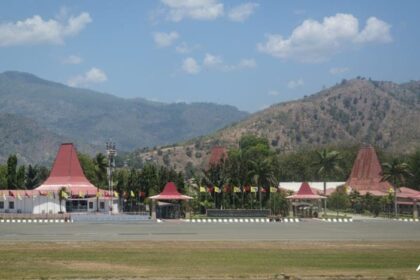Why China Wants Certainty on Palm Oil Supplies
China has asked Indonesia to guarantee steady shipments of crude palm oil as its domestic demand grows, a request conveyed during a recent visit by Deputy Minister of Agricultural and Rural Affairs Maierdan Mugaiti. Indonesian Deputy Agricultural Minister Sudaryono said Beijing also sought supply assurance for natural rubber and edible birds nest, underlining how critical Indonesia has become in meeting Chinese demand across a range of agri commodities.
- Why China Wants Certainty on Palm Oil Supplies
- How Rising Chinese Demand Meets Indonesian Energy Policy
- The Sustainability Challenge Shaping the Trade
- Indonesias Plan to Boost Yields Without New Land
- Trade and Geopolitics Behind a Supply Pledge
- Global Vegetable Oil Market Signals
- What a Supply Guarantee Could Look Like
- At a Glance
Indonesia recorded a 1.77 billion dollar agricultural trade surplus with China in 2024. Palm oil led the gains with 2.72 billion dollars in exports to China, followed by edible birds nest at 428 million dollars, rubber at 363 million dollars, coconut at 270 million dollars, and cacao at 218 million dollars. Those figures highlight an accelerating link between the two economies, with palm oil at the core of food processing, consumer goods, and industrial uses in China.
Beijing is seeking long term certainty for palm oil flows from the worlds largest producer, while Jakarta is trying to raise productivity and keep exports reliable even as it expands domestic use. Indonesia currently runs its B40 program, a diesel blend that contains 40 percent palm biodiesel, and plans to reach B50 next year. The government says the goal is to support domestic energy security and rural livelihoods without weakening export performance.
How Rising Chinese Demand Meets Indonesian Energy Policy
Chinese demand for vegetable oils has grown with population, income, and a vast food manufacturing base. Palm oil is used widely in instant noodles, baked goods, confectionery, snack foods, and personal care items. It also competes with soybean oil, rapeseed oil, and sunflower oil for kitchen and industrial uses. Price competitiveness, stable supply, and functionality keep palm oil attractive to buyers in China, which imports large volumes from Southeast Asia for blending and refining.
Indonesia is central to that equation. It produced about 47 million tonnes of crude palm oil in 2023 and accounted for a majority share of global exports. The sector supports millions of jobs and contributes a meaningful share of national output. Production growth and refinery capacity expansion have allowed Indonesia to serve big importers such as China while also building resilience through domestic programs that anchor demand.
Domestic consumption has trended higher as Indonesia scales biodiesel and downstream industries. Between 2018 and 2022, the share of production consumed at home rose from about one third to nearly one half. A move to B50 would raise local demand further, so officials are prioritizing yield gains, more efficient refineries, and logistics upgrades to avoid export shortfalls.
Will B50 tighten export flows
The shift to a 50 percent blend is designed to reduce fuel imports, support smallholders, and stabilize farm incomes during periods of global price volatility. Business groups and engineers have discussed a B45 step for easier rollout, but the policy direction is clear. The energy program will grow. That creates a planning challenge for exporters, who need predictable volumes, and for buyers in China, who want contracts that run for years.
Jakarta says it can keep exports robust by lifting productivity on existing land and by managing domestic obligations carefully. If execution matches that plan, Chinese buyers could secure more certainty without squeezing domestic supply in Indonesia.
The Sustainability Challenge Shaping the Trade
The palm oil story is also a land use story. Expansion of oil palm plantations was a major driver of forest loss in Indonesia over the past two decades. Researchers estimate that about one third of old growth forest loss was linked to the crop at its peak. That trend has eased. Deforestation attributed to industrial oil palm fell sharply over the last decade, averaging around 32 thousand hectares a year from 2018 to 2022, a fraction of the level seen a decade earlier. There was an uptick in 2022, yet it remained far below prior peaks even as production continued to rise.
Emissions remain a concern. Fires on drained peatlands and peat subsidence release large amounts of greenhouse gases. Although a small share of plantations sit on peat, those areas account for the vast majority of sector emissions. Estimates suggest industrial palm oil production emitted an average of roughly 220 million tonnes of carbon dioxide equivalent annually between 2015 and 2022, with peatland areas contributing most of the total. Keeping peat wet, preventing fires, and steering new investment away from sensitive areas are essential to cutting emissions while maintaining output.
Market pressure and corporate policies have evolved as well. Zero deforestation commitments now cover a large share of Indonesian palm oil exports, and most refined exports are shipped from refineries that publish supplier lists. Even with progress on traceability, buyers in China, India, and Indonesia tend to source a higher share of volumes with elevated exposure to deforestation than buyers in the United States, the European Union, or the United Kingdom. New regulations in Europe require strict proof that products are deforestation free, which is reshaping how supply chains document origin and land use status.
China is moving toward more sustainable agri commodity trade as part of a wider food security strategy that includes climate resilience and waste reduction. Palm oil traceability is still a challenge at national scale, given the large number of producers and traders. Closer alignment on standards with major suppliers, shared data systems, and incentives for certified sourcing would help China reduce risks linked to land use, while giving Indonesian producers confidence that investments in cleaner practices will be rewarded.
What buyers ask for beyond price
Major importers increasingly want deforestation free proof, mill and plantation traceability, and labor safeguards. Certifications help, but buyers also seek independent verification and grievance systems that respond quickly when issues emerge. Contracts that embed these requirements, with clear timelines and support for farmers to comply, are becoming part of day to day trade. For Indonesia and China, joint programs that fund replanting on degraded land, expand satellite monitoring, and train smallholders can turn sustainability from a cost into a market advantage.
Indonesias Plan to Boost Yields Without New Land
Indonesia aims to raise output by making existing plantations more productive rather than clearing new forest. Replanting old trees with higher yielding seedlings, improving fertilizer use, and upgrading harvesting practices can lift yields substantially. Better road access, storage, and mill efficiency also cut losses and raise the quality of crude palm oil delivered to exporters.
Many smallholder trees are past peak productivity. Replanting can double yields over time, yet farmers need bridge financing while new trees mature. Credit programs, guaranteed offtake, and technical assistance are critical so small farms can replace old stands without losing their livelihoods during the gap years between planting and first harvests.
Authorities have also stepped up enforcement against plantations that operate without valid permits or inside protected areas. Land audits and legal reviews are under way across several provinces. High profile actions in sensitive landscapes signal that enforcement is part of an export strategy that prizes legal compliance and long term market access in addition to higher yields.
Smallholders at the center
Smallholders produce a large share of Indonesian palm oil. Bringing them into traceable, verified supply chains is fundamental if export growth is to align with sustainability goals. Cooperative models, guaranteed purchase agreements, and price transparency reduce the power imbalance between farmers and intermediaries. Digital tools that document farm boundaries and link deliveries to specific mills can make certification less costly and reduce the risk of exclusion.
Public and private finance can target replanting on degraded land, peat restoration, and smallholder training. Buyers in China that commit to long term contracts with sustainability conditions can co fund these efforts, which builds reliable volumes while improving social and environmental outcomes.
Trade and Geopolitics Behind a Supply Pledge
China is Indonesias largest trading partner, buying a large share of non oil exports and supplying a large share of imports. The relationship extends far beyond commodities into infrastructure, industry, and technology. Indonesia has posted consistent headline trade surpluses in recent years, yet it often runs a bilateral deficit with China, a signal of deep interdependence and reliance on Chinese machinery and industrial inputs.
Against that backdrop, a palm oil supply guarantee would be as much a strategic signal as a commercial deal. For Beijing, it strengthens food and consumer goods security, while for Jakarta it converts a key export into stable, predictable revenue that can fund rural development, biodiesel expansion, and replanting programs. The request also reflects a broader trend in which large economies seek supply security for staple goods in response to climate shocks, shipping disruptions, and commodity price swings.
Why long term deals appeal to both sides
Long term purchase agreements can smooth price volatility by linking volumes to a benchmark with bands or collars. They can include quality standards, traceability milestones, and financing support for farm upgrades. For Indonesia, they reduce the risk of sudden demand drops and help mills and refineries plan capacity. For China, they ensure consistent inputs for food processors and consumer goods firms, and they reduce exposure to market squeezes.
Shared investment in storage, logistics, and digital traceability would lower costs. If contracts reward verified deforestation free supply with preferential pricing, sustainability becomes a commercial advantage rather than a hurdle.
Global Vegetable Oil Market Signals
Palm oil competes with soybean, rapeseed, and sunflower oils that are influenced by weather and politics in different regions. Drought in key soybean areas or a weak rapeseed harvest in major exporters can tighten vegetable oil balances. In such periods palm oil often anchors global supply because its production is more concentrated and harvest cycles are more stable. That is one reason China spreads its edible oil imports across several sources, while keeping a strong link with Indonesia for palm oil.
Indonesia and Malaysia together supply more than four fifths of global palm oil exports. Pricing is sensitive to seasonal production, policy changes in producer countries, and freight costs. When Indonesia diverts more crude palm oil into biodiesel, exportable supply can tighten. When yields rise after replanting and better farm management, the export cushion expands. Stability in this system depends on clear domestic policies and predictable trade rules that give refiners and buyers the confidence to plan ahead.
Competing supply from Malaysia
Malaysia is the second largest producer and a key supplier to China. It is pushing up certification rates and promoting sustainable practices to defend market share. Chinese buyers often split tenders between Indonesia and Malaysia to hedge logistics and quality risks. Indonesia retains a scale advantage and larger growth potential, yet competition keeps both suppliers focused on quality, reliability, and sustainability performance.
What a Supply Guarantee Could Look Like
A government to government memorandum could set principles on volumes, quality, and sustainability. Private companies would then execute multi year offtake contracts that reference international futures prices and include delivery schedules tied to Indonesian production cycles. Contracts can allow for seasonal adjustments, with optional volumes during peak harvest and floor volumes outside peak, giving exporters and buyers a workable rhythm.
Stable export levies, transparent domestic supply obligations, and clear biodiesel blending targets would reduce policy risk. Logistics agreements could cover storage capacity in Indonesian ports, long term freight bookings, and shared contingency plans for weather delays. Independent verification, satellite based monitoring, and public grievance protocols would support the sustainability component and give both sides confidence that the trade aligns with global expectations.
Risks that could still disrupt flows
- Weather shocks such as El Nino or sustained heavy rains can reduce yields and slow harvesting.
- Changes to export levies or domestic market obligations can shift volumes available to foreign buyers.
- The move from B40 to B50 raises local demand and must be balanced with export commitments.
- Deforestation rules in destination markets require strict traceability and could block non compliant cargoes.
- Shipping disruptions or port congestion can delay deliveries and raise freight costs.
- Large swings in currency and global vegetable oil prices can challenge contract execution without robust pricing clauses.
At a Glance
- China asked Indonesia to guarantee long term supplies of crude palm oil, plus rubber and edible birds nest, amid rising demand.
- Indonesia posted a 1.77 billion dollar agricultural trade surplus with China in 2024, with palm oil exports at 2.72 billion dollars.
- Jakarta is moving from B40 to B50 next year to boost energy security, while promising to keep exports reliable.
- Deforestation tied to industrial oil palm has fallen from past peaks, yet emissions from peatlands remain a major challenge.
- Zero deforestation policies and traceability are expanding, but buyers still seek stronger proof of clean supply chains.
- Indonesia plans to lift yields on existing land through replanting and smallholder support rather than new forest clearance.
- China remains Indonesias largest trading partner, making supply agreements both a strategic and commercial priority.
- Multi year offtake contracts with sustainability conditions, clear pricing, and logistics investment could anchor dependable flows.












